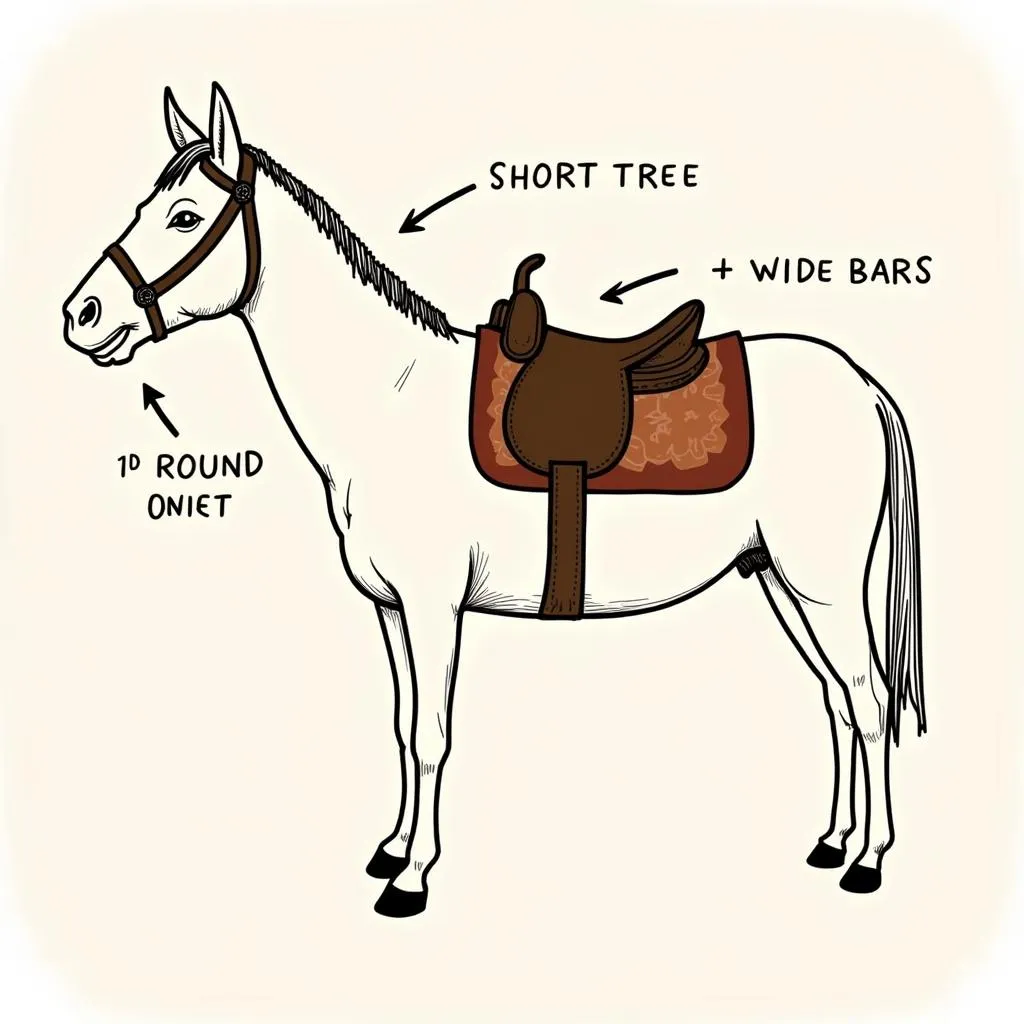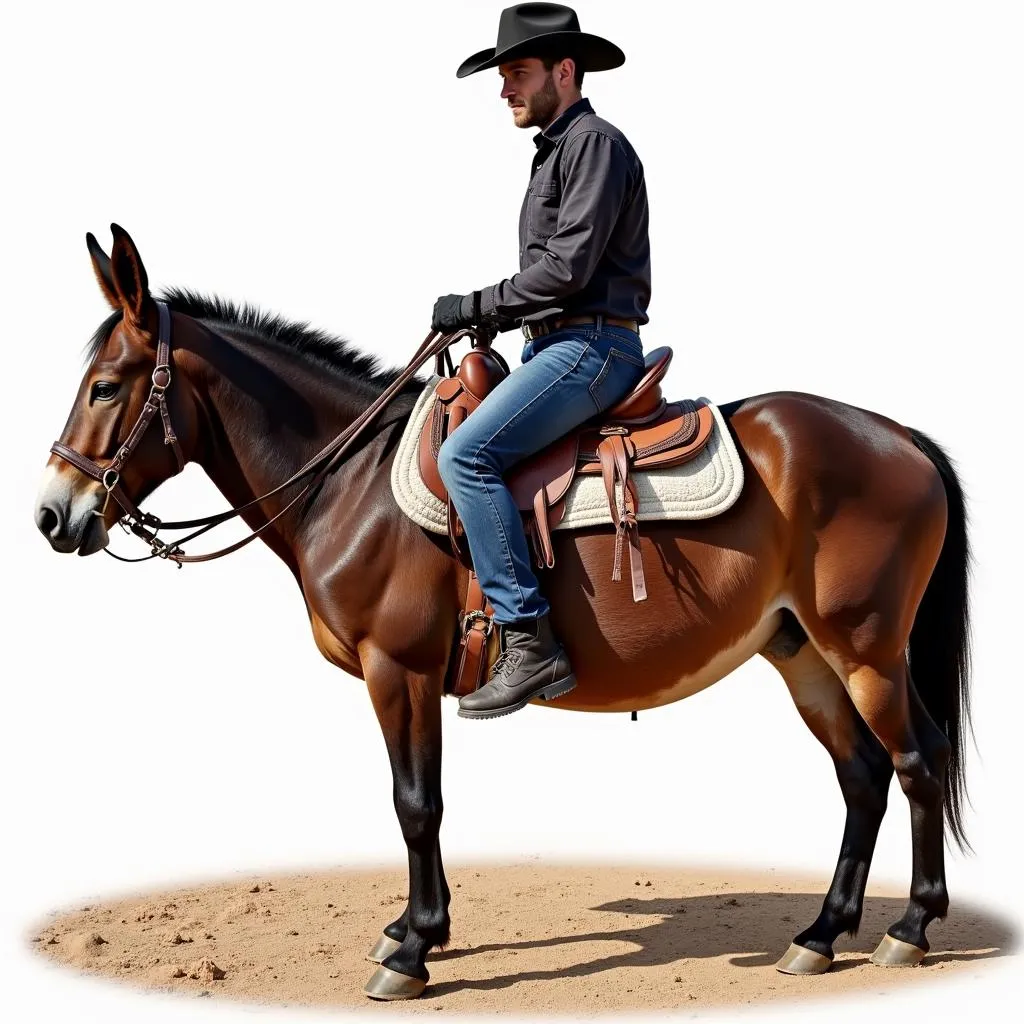When it comes to riding comfortably and safely, having the right saddle is crucial. But with so many options available, it can be challenging to know where to start, especially when considering a mule saddle vs. horse saddle. While they might appear similar at first glance, key differences in design and purpose set them apart. This comprehensive guide will delve into the world of mule and horse saddles, exploring their unique characteristics, advantages, and factors to consider when choosing the perfect fit for you and your riding companion.
Understanding the Anatomy of a Mule vs. a Horse
To truly grasp the distinctions between a mule saddle and a horse saddle, we first need to appreciate the anatomical differences between mules and horses. Mules, the offspring of a male donkey and a female horse, inherit physical traits from both parents. This blending results in a unique conformation that requires special consideration when selecting a saddle.
Mules typically have:
- Shorter, rounder backs: This means a horse saddle, often designed for longer, flatter backs, can cause discomfort and pressure points.
- More upright shoulders: A horse saddle’s tree points, the rigid framework that determines its shape, may sit too close to the shoulder blades of a mule, restricting movement.
- Narrower builds: Mules tend to be narrower than horses, especially through the chest. A horse saddle may feel too wide, leading to instability and potential sores.
 Mule vs. Horse Anatomy: Key Differences
Mule vs. Horse Anatomy: Key Differences
Key Features of a Mule Saddle
A well-designed mule saddle addresses the unique anatomical characteristics of a mule, ensuring comfort and freedom of movement. Here’s what sets them apart:
- Shorter Tree: This accommodates the mule’s shorter back, preventing bridging and pressure points.
- Wider Bars: The bars, the underside of the saddle’s tree, are set wider apart to distribute the rider’s weight more evenly across the mule’s back.
- Rounder Skirts: The skirts, the leather panels that hang down the sides of the saddle, are shaped to follow the contours of a mule’s rounder barrel.
- Lower Horn: Positioned further forward to avoid interfering with the mule’s upright withers.
- Reduced Weight: Mule saddles are generally lighter than horse saddles, making them more comfortable for the mule to carry, especially during long rides.
 Components of a Mule Saddle
Components of a Mule Saddle
When a Horse Saddle Might Be an Option
While a mule saddle is typically the preferred choice for riding mules, certain situations might warrant considering a horse saddle:
- Horse-Mules: These mules, with a higher percentage of horse blood, might have a conformation closer to a horse.
- Proper Fit: If a horse saddle happens to fit a mule correctly, meaning it doesn’t cause pressure points or restrict movement, it can be used. However, this requires careful assessment by an experienced saddle fitter.
- Specific Disciplines: For disciplines like English riding, where specialized saddles are used, a properly fitted horse saddle might be suitable.
Choosing the Right Saddle: Factors to Consider
Selecting the perfect saddle, whether it’s a mule saddle vs. horse saddle, depends on various factors:
- Mule’s Conformation: Take accurate measurements of your mule’s back length, wither height, and girth to determine the appropriate saddle size.
- Riding Style and Discipline: The type of riding you plan to do influences the saddle style. For example, a trail saddle is ideal for leisurely rides, while a pack saddle is designed for carrying gear.
- Rider Comfort: Consider your own comfort and preferences. A saddle should provide adequate support and weight distribution for the rider.
 Proper Saddle Fit for a Mule
Proper Saddle Fit for a Mule
Seeking Expert Advice
“Choosing the right saddle is an investment in the well-being of both you and your mule,” says Sarah Jones, a certified equine saddle fitter with over 20 years of experience. “Don’t hesitate to seek professional advice from a qualified saddle fitter. They can assess your mule’s conformation, evaluate your riding needs, and recommend the most appropriate saddle options.”
Finding the perfect saddle for your mule might require some trial and error. But by understanding the key differences between mule saddles and horse saddles, and considering your mule’s unique needs, you can make an informed decision that ensures a comfortable and enjoyable riding experience for both of you.
FAQs
Q: Can I use a horse saddle blanket on a mule saddle?
A: Yes, you can typically use a horse saddle blanket on a mule saddle, as long as it fits properly and doesn’t bunch up or create pressure points.
Q: Are mule saddles more expensive than horse saddles?
A: Due to their specialized nature and often handcrafted construction, mule saddles can sometimes be slightly more expensive than horse saddles.
Q: What are some reputable brands that specialize in mule saddles?
A: Some well-regarded mule saddle makers include [Brand A], [Brand B], and [Brand C].
Do You Have More Questions?
For personalized guidance and support in choosing the right saddle for your equine partner, contact Justus Horses USA at [Phone Number] or email us at [Email Address]. We are committed to providing expert advice and exceptional customer service to help you find the perfect fit for a happy and comfortable ride. Our team at Justus Horses USA is available 24/7 to assist you. You can also visit us at our location at [Address] for a personalized consultation.